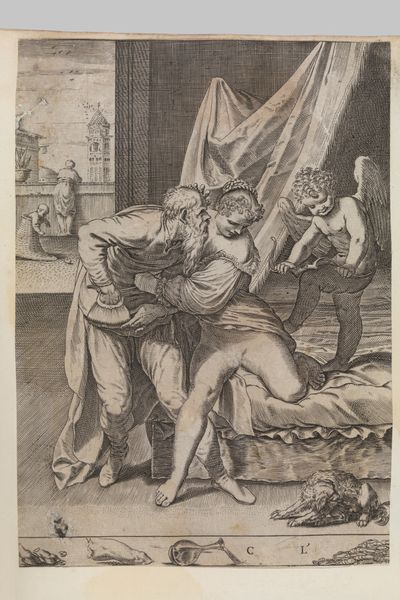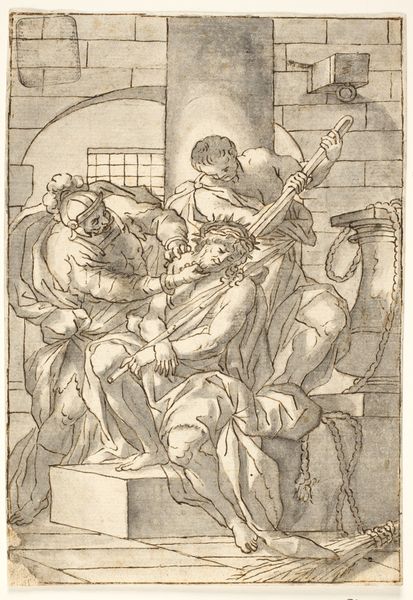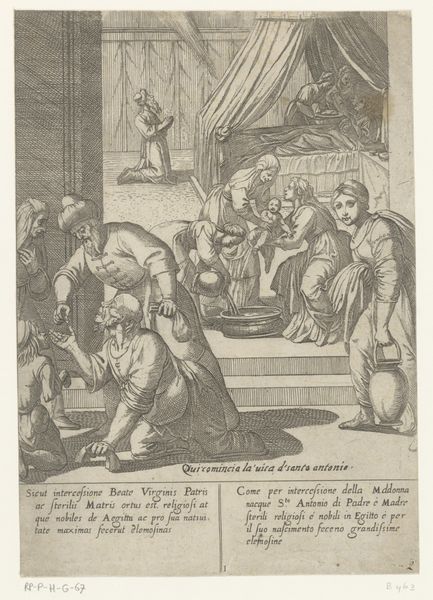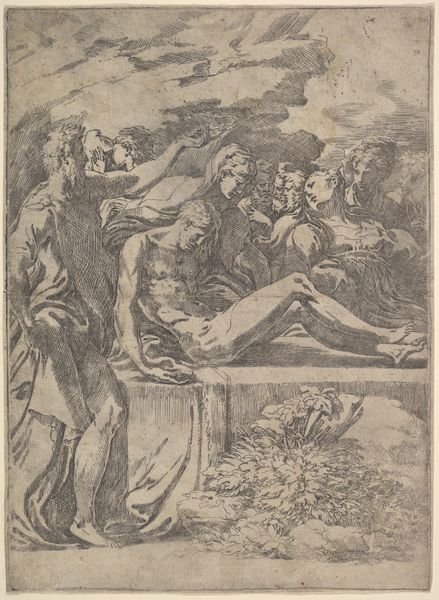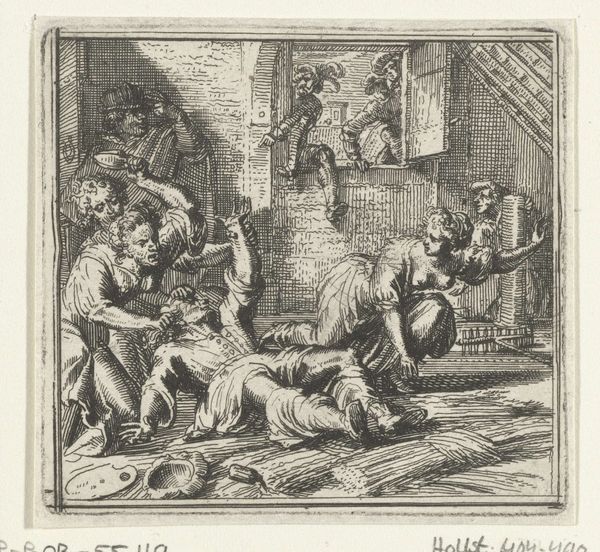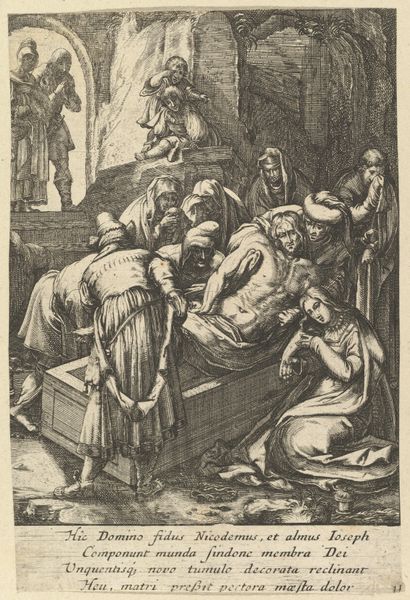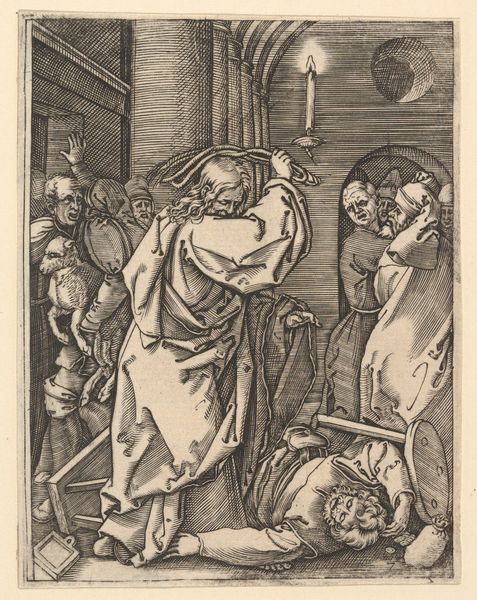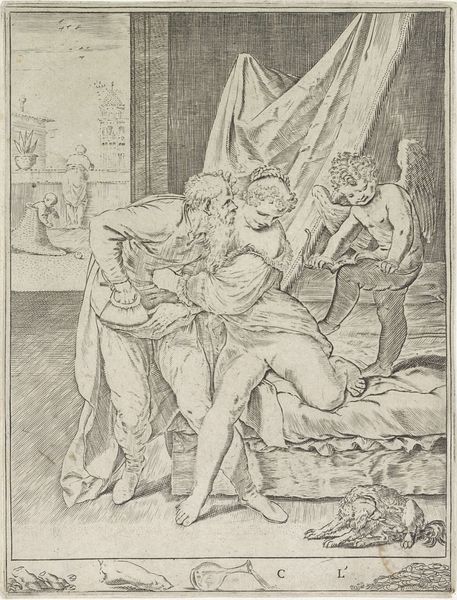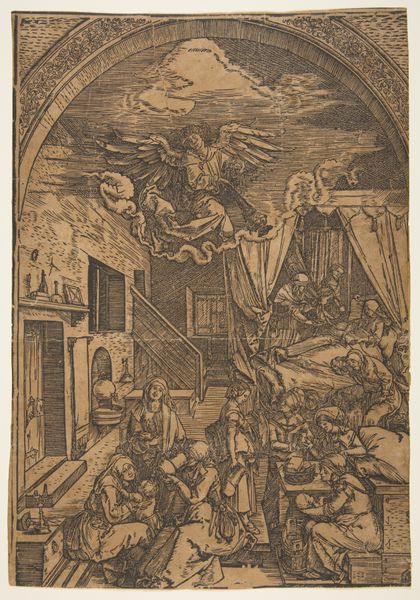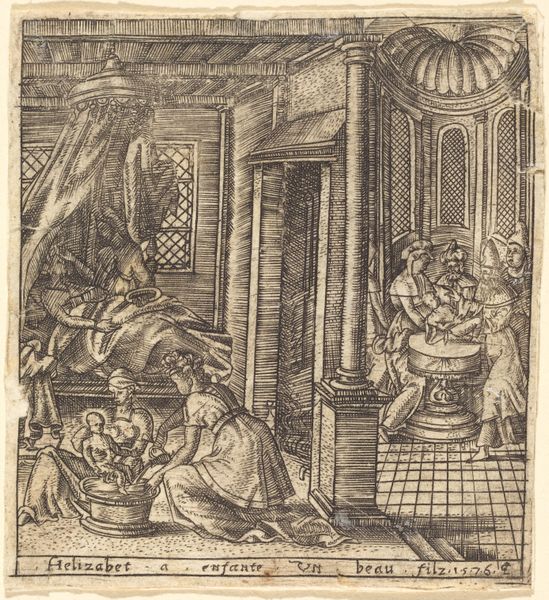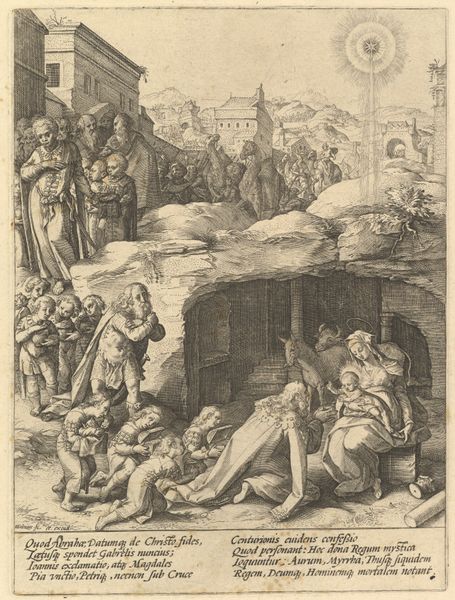
drawing, paper, ink, chalk
#
portrait
#
drawing
#
baroque
#
paper
#
ink
#
chalk
Copyright: Public Domain
Curator: Today we're looking at Salvator Rosa's "In Vulcan's Smithy," a drawing held here at the Städel Museum, rendered in ink and chalk on paper. Editor: My immediate impression is one of weary resignation. The central figure dominates the scene, but he seems utterly disconnected from the activity around him. There’s a heaviness to it, despite the lively background. Curator: Indeed. This work speaks to broader themes present in Rosa's oeuvre: the exploration of labor and its discontents, perhaps even a commentary on class and the plight of the working man in Baroque society. We see him reclining while the forge continues apace. Editor: That recumbent figure immediately reads as Vulcan. Consider the iconography of the smith: he’s typically rendered powerful, actively forging. Rosa’s subversion, depicting him in repose, imbues the image with unexpected symbolism. Is it a comment on the nature of power itself, on divine exhaustion? Curator: That's an interesting read. Given the turbulent political landscape of 17th-century Italy, Rosa was often concerned with depictions of rebellion and social critique, using history and mythology as allegorical tools. The subtle details—the tools scattered, the fire blazing seemingly without purpose—contribute to a feeling of societal unease and unresolved tensions. The question hangs, what is being forged and for what destructive end? Editor: And the figures in the background are framed by flames! Fire representing inspiration or destruction--this element speaks powerfully to themes of change, violence and, yes, even revolution. The reclining god also brings forth the symbolism of the archetype of a disabled divinity—isolated in their power, burdened by their inability. Curator: Absolutely. And even from a materials perspective—the way the ink bleeds slightly into the chalk, creating these soft edges—emphasizes the fleeting nature of labor, the impermanence of even the most fiery and transformative actions. Editor: It's fascinating how Rosa uses such simple materials to convey such profound symbolic weight. The combination is unsettling yet invites deeper consideration. Curator: Rosa manages to make a pointed statement about society, power and work without a single, overt pronouncement. Editor: A poignant work that reveals layer upon layer of visual meaning even after extended observation.
Comments
No comments
Be the first to comment and join the conversation on the ultimate creative platform.
